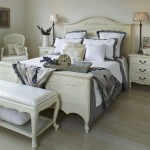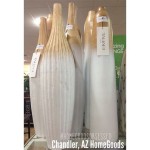```html
Nature House Decor: Bringing the Outdoors In
Nature house decor encompasses a design philosophy centered around incorporating natural elements, materials, and motifs into the interior spaces of a home. The aim is to create a serene, calming, and visually appealing environment that mimics the peace and tranquility experienced in natural settings. This design approach moves beyond mere aesthetics, aiming to improve overall well-being by fostering a deeper connection with the outdoors.
The principles of nature house decor extend beyond simply adding houseplants. It involves a holistic consideration of color palettes, materials, textures, lighting, and spatial arrangements. It seeks to create a cohesive ambiance that promotes relaxation, reduces stress, and enhances creativity, mirroring the positive effects often associated with spending time in nature.
Embracing Natural Materials
A cornerstone of nature house decor is the use of raw, unprocessed, and sustainable materials. Wood, stone, bamboo, rattan, and cork feature prominently in furniture, flooring, and decorative accents. These materials bring warmth, texture, and an organic feel to the space, contrasting with the often-sterile feel of modern, synthetic alternatives.
Wood, in particular, plays a versatile role. Reclaimed wood can be used for creating unique furniture pieces, such as coffee tables and benches, adding character and history to the design. Light-colored woods like birch and maple can brighten a room, while darker woods like walnut and oak provide a sense of grounding and stability. The natural grain patterns of wood contribute to the visual interest and tactile appeal of the decor.
Stone, whether used for fireplaces, countertops, or feature walls, introduces a sense of permanence and connection to the earth. The rough texture and varied colors of natural stone create a visually stimulating element. River rocks can be incorporated into decorative bowls or used as accents in plant arrangements, further emphasizing the natural theme.
Bamboo is a highly sustainable material that offers a lightweight and versatile alternative to wood. It can be used for flooring, wall panels, window coverings, and furniture. The natural patterns and colors of bamboo add a touch of exotic elegance to the decor. Rattan, another sustainable material derived from palm stems, is commonly used for furniture and woven baskets, adding texture and a bohemian flair.
Cork, derived from the bark of cork oak trees, is a highly renewable and eco-friendly material. It possesses excellent insulating properties and sound absorption capabilities, making it a practical choice for flooring and wall coverings. Cork's natural texture and warm color tones add a rustic charm to the interior space.
Integrating Natural Light and Ventilation
Maximizing natural light is crucial in nature house decor. Large windows, skylights, and glass doors should be incorporated to flood the interior with sunlight. This not only enhances the natural feel of the space but also reduces the reliance on artificial lighting, contributing to energy efficiency.
Window treatments should be chosen carefully to allow ample sunlight while providing privacy. Sheer curtains, light-filtering shades, and blinds made from natural materials like bamboo or linen are ideal options. Avoid heavy drapes that block natural light and create a dark and claustrophobic atmosphere.
Proper ventilation is equally important. Open windows and doors whenever possible to allow fresh air to circulate throughout the home. This helps to improve air quality, reduce humidity, and create a more comfortable and invigorating living environment. The use of ceiling fans can also help to circulate air and maintain a consistent temperature.
Placement of mirrors can strategically enhance the effect of natural light. Mirrors placed opposite windows can reflect sunlight into the room, making the space appear larger and brighter. The reflective surface of mirrors also adds a touch of elegance and sophistication to the decor.
Consider the orientation of the house when planning for natural light. South-facing windows receive the most sunlight throughout the day, while north-facing windows provide a softer, more diffused light. East-facing windows capture the morning sun, while west-facing windows receive the afternoon sun. Understanding these nuances allows for optimizing the placement of windows and furniture to maximize natural light exposure.
Incorporating Plants and Nature-Inspired Art
Plants are indispensable components of nature house decor. They add vibrancy, improve air quality, and create a sense of connection to the natural world. A variety of plants can be incorporated, ranging from small succulents to large potted trees, depending on the available space and personal preferences.
Consider incorporating a variety of plant types to add visual interest and diversity. Flowering plants can add pops of color, while foliage plants provide texture and greenery. Herbs can be grown in the kitchen, providing fresh ingredients for cooking and adding a fragrant element to the space. Hanging plants can be used to soften the edges of rooms and create a sense of verticality.
The selection of plant containers is also important. Terracotta pots, wooden planters, and woven baskets add a natural touch and complement the overall design aesthetic. Consider using a variety of sizes and shapes to create visual interest and depth.
Nature-inspired art can further enhance the theme. Paintings of landscapes, botanical prints, and photographs of wildlife can bring the beauty of the outdoors into the home. Sculptures made from natural materials like wood, stone, or clay can add texture and dimension to the decor.
Nature-inspired patterns can also be incorporated into the decor through textiles, wallpapers, and rugs. Floral prints, leaf patterns, and animal motifs can add a touch of whimsy and personality to the space. Choose patterns that complement the overall color scheme and design aesthetic of the room.
The specific types of plants chosen for nature house decor can vary widely depending on the climate, personal preference, and the amount of natural light available in the space. However, some popular choices include snake plants, spider plants, ferns, peace lilies, and succulents. These plants are relatively easy to care for and can thrive in indoor environments.
By carefully selecting and incorporating natural materials, maximizing natural light and ventilation, and integrating plants and nature-inspired art, a home can be transformed into a sanctuary that promotes well-being and fosters a deeper connection with the natural world.
```
9 Natural Decor Ideas For An Outdoor Inspired Home Decorilla

Nature Inspired Home Décor 8 Sustainable Ideas Fossil Blu

How To Incorporate Natural Decor Into Your Home Decorilla
Bringing Mother Nature Into Home Decor Luxe Interiors

How To Style Decorative Branches According Athena Calderone Home Interior Design Living Room House

All The Natural Decor Ideas You Need To Turn Your Home Into An Earthy Oasis Hunker Living Room House Interior

How To Use Earthy Natural Home Decor

25 Rustic Living Room Ideas Modern Decor And Furniture

Épinglé Sur Wohimmerideen

Decorating With Nature Greenhouse Studio
Related Posts







